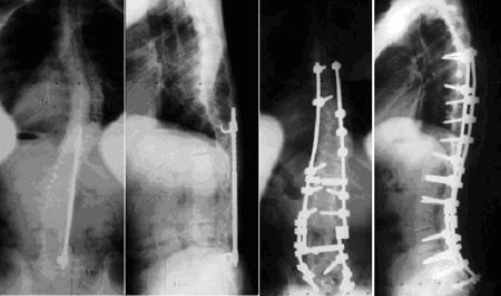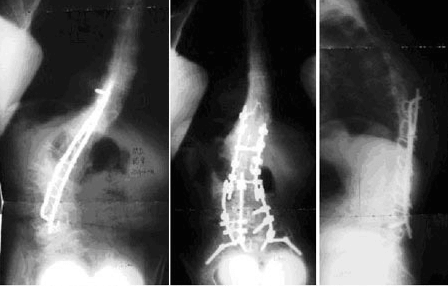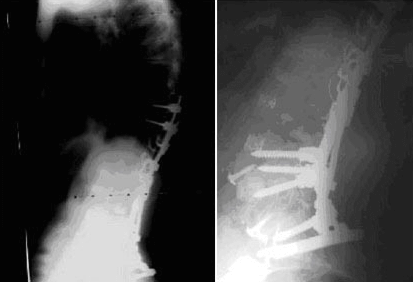Flatback Syndrome
Flatback Syndrome
Flatback syndrome is a group of disorders characterized by the patient having difficulty standing upright due to a loss of lordosis or sway in the lower back causing the individual to be pitched forward. This is commonly associated with the old Harrington rod procedure performed years ago for scoliosis. Patients commonly had fusions extended into the lower lumbar area. The corrective maneuver performed with the Harrington rod caused flattening or straightening of the normal lumbar lordosis. For a number of years following surgery, patients are able to compensate with the normal discs below the fusion, but after a number of years, those discs degenerate and prevent the patient from standing upright comfortably. Patients complain of back pain and have significant disability. Other causes of flatback syndrome include degenerative disc disease involving multiple levels of the spine, ankylosing spondylitis, and post laminectomy syndrome.
Although attempts can be made at nonoperative treatment, typically, flatback syndrome is treated with surgery. This entails instrumentation of the spine combined with osteotomies (cutting through the spinal column) to realign the spine and provide the patient with comfortable alignment and balance. Restoration of function and quality of life is often quite remarkable following surgery for flatback syndrome.
Case Example #1

This 42 year old woman underwent scoliosis correction with the Harrington rod when she was a teenager. This resulted in a flattening out of the normal lumbar lordosis or sway in the lower back. As a result of this, she eventually developed symptoms of flatback syndrome. She was treated with a pedicle subtraction osteotomy, a technique that allows restoration of the normal lordosis. This patient feels she has a new lease on life, a typical sentiment in the patient who has had a correction for flatback syndrome.
Case Example #2


This 40 year old woman developed a combination of flatback syndrome and decompensation of her torso in the coronal plane (frontal plane) as a result of a poorly constructed surgery performed in her teen years. This was corrected with anterior and posterior reconstruction with osteotomies. Note the dramatic improvement in her spinal alignment. This resulted in marked improvement in her function.
